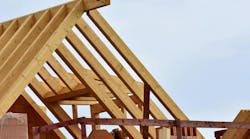Low-income housing doesn’t lower neighborhood housing values
An analysis by real-estate listing website Trulia in the 20 highest-priced U.S. housing markets from 1996 to 2006 found that residential property values near low-income housing were not significantly impacted.
The study looked at more than 3,000 low-income housing projects and their surrounding neighborhoods. Home values within 2,000 feet of low-income housing projects were largely the same as homes between 2,000 and 4,000 feet from these projects.
Some of the least affordable markets have experienced resistance to building affordable housing, with some opponents claiming these projects depreciate nearby home values. Opposition to affordable housing development has surfaced in tight housing markets across the country such as San Francisco, New York, and Seattle.
San Jose, Calif., was the most aggressive in adding low-income housing units (7.81 per 1,000 people) during the decade, Trulia says. By contrast, Oakland, (0.52 per 1,000 residents) added the fewest units per capita.
Of the 20 markets examined, Denver was the only metro area where homes located near low-income housing projects experienced an increase in price per square foot after a project was completed. In Boston and Cambridge, Mass., however, low-income housing projects had a negative effect on the value of nearby homes, suggesting a region-specific market effect. Affordable housing projects in most of the other areas had no significant impact on home values.


